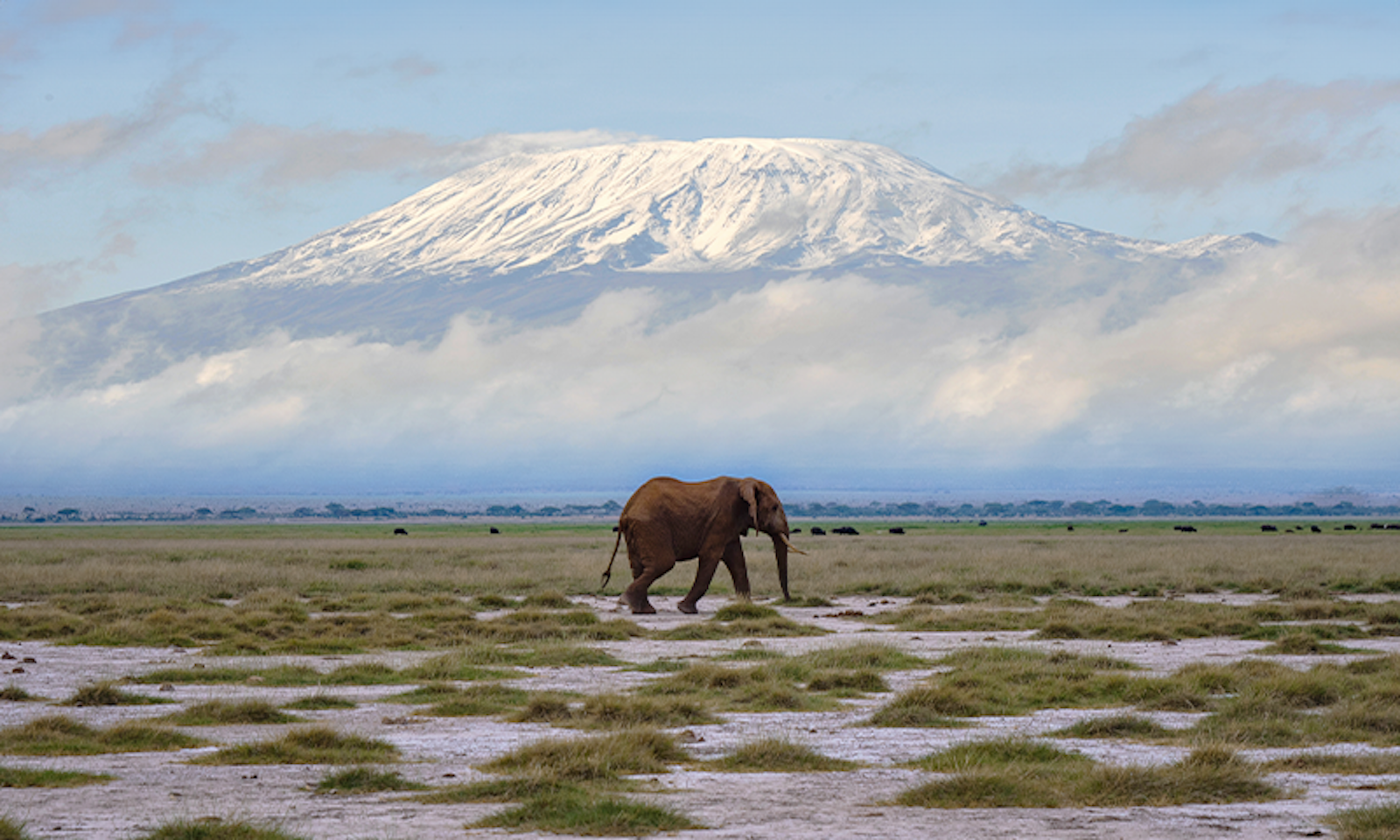Tanzania’s Mount Kilimanjaro is the highest peak on the African continent at 19,340 feet above sea level. Rising from dense rainforests through shrubby moorlands and sparse alpine desert, the summit of Kilimanjaro has been covered in ice for nearly 12,000 years.
The snow-capped peak is revered by the Chagga and Maasai communities who live in the mountain’s foothills—the Chagga regard it as the seat of God. Since the first recorded ascent in 1889, it has attracted adventurers from all over the world, everyone from Ethiopian emperors to United States presidents.
But the iconic icecaps soaring above the Tanzanian landscape are on the verge of disappearing. And while Kilimanjaro’s ice receives the most attention, many other peaks throughout the continent also have glaciers, including neighboring Mount Kenya and the Rwenzori Range, which lies between Uganda and the Democratic Republic of the Congo. All of these African glaciers are melting so rapidly that the entire continent is on track to become ice-free within a couple of decades, says Douglas Hardy, a climate and glacier scientist with the University of Massachusetts. It would be the first time in tens of thousands of years any continent on Earth has been totally glacier-free.
The area covered by glaciers in East Africa has shrunk by half over the past 25 years.
Hardy has been studying Kilimanjaro’s glaciers since 2000 and, along with researcher Anne Hinzmann, he’s just published a new paper that calculated the extent of the dramatic glacier loss throughout East Africa. “The takeaway is that we are now perilously close to losing all African glaciers, with all that entails—including their environmental archive and touristic aesthetics,” says Hardy. When glaciers vanish, so does the scientific record they contain about past climate and many other aspects of the environment.
Hardy reports that the most striking retreat has taken place at Kilimanjaro’s Furtwängler Glacier, the one most closely associated with the mountain and the one at which particularly intrepid climbers have long camped overnight. He recorded a shocking 70 percent decrease in the size of Furtwängler between February 2020 and October 2023. Once an expansive ice cap, Furtwängler today is little more than a jagged white shard, a remnant of centuries past.
Analysis of satellite images of the glaciers across Kilimanjaro, Mount Kenya, and the Rwenzori Range in 2021 and 2022 suggests that the total area covered by glaciers in East Africa has shrunk by half over the past 25 years. Mount Kenya lost more than half of its glacier mass during 2016 alone, while the three remaining glaciated mountains in the Rwenzori Range have experienced a glacier retreat of 67 percent since 2005.
We are now perilously close to losing all African glaciers, with all that entails.
East Africa isn’t the only region with tropical glaciers. They’re also found in the Andes Mountains of South America and the Sudirman Range in Indonesia. In tropical regions, glaciers can only be found at high elevations. Tropical glaciers are especially susceptible to rising global temperatures, and are retreating faster than glaciers in polar regions—but it’s an alarming race to the bottom all over the world. Greenland’s peripheral glaciers, for example, are also retreating twice as fast today as they were during the 20th century.
The vanishing of the glaciers in East Africa will have huge impacts on the health of a diverse range of African ecosystems, reducing water available to rivers and to endemic plants and animals, damaging water supply for local human populations that are already water-stressed through changes to seasonal rain patterns, and increasing the risks of hazards such as avalanches. The disappearance of the glaciers on Kilimanjaro in particular could also undercut local livelihoods of the thousands of Tanzanians who work as guides and porters on the mountain’s slopes, supporting their families with income generated by tourism.
Whether interest in climbing Africa’s highest mountain will slow when its glaciers have disappeared remains to be seen—aside from the change in the visual spectacle, an increase in geological hazards could make climbing the mountain less safe—but in the meantime, there may be an uptick in interest, travelers hunting for a last glimpse of the ice. Some refer to this type of travel as “climate doom” tourism—the race to see disappearing landscapes before they’re gone. ![]()
Lead image: Hyserb / Shutterstock
































